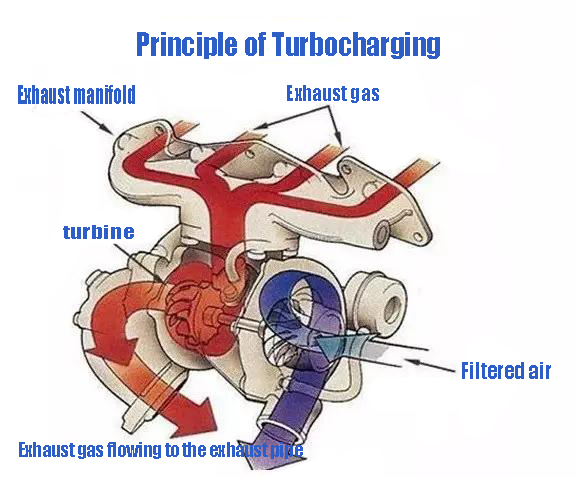What is the difference between supercharging and turbocharging Part2
2020-05-27
Turbocharged engines and supercharged engines are currently the two most used supercharging structures for engines. The main functions of these two superchargers are to inject more air into the engine cylinder and increase the air density in the engine cylinder. To improve the power of the engine. Let's take a look at the following: the difference between supercharging and turbocharging:

Turbocharging uses the exhaust gas generated by the engine to push the turbofan in the exhaust pipe to drive the turbofan in the intake pipe to rotate, indirectly supercharging, without consuming the power of the engine.
The intervention of the turbocharger is different for each engine, generally around 1500 rpm, that is, the engine will not be provided with additional intake air when it does not reach 1500 rpm, so the turbo is low at a low speed, especially when the traffic is blocked Without intervention, the low-speed power will naturally be weaker than that of supercharging.
The turbocharger's speed is extremely high, and the pressure increase is several times higher than that of the mechanical supercharger. However, due to the inertia of the turbofan, the intermediate bearing also has considerable resistance. When the exhaust gas suddenly increases, the speed of the turbofan will not increase at the same time, which is the turbo lag.
The turbocharger is driven by exhaust gas. The higher the engine speed, the stronger the exhaust gas power and the higher the turbine speed. There is no limitation of mechanical supercharging, so it can provide sufficient supercharging at high speed and better power.
In summary, the advantages of turbocharging are still very obvious. After supercharging, the performance of the engine at low operating conditions is basically not reduced, while the power output, fuel economy and emissions of medium and high operating conditions can be greatly improved; In addition, the volume and weight of the supercharger are constantly decreasing, the reliability is continuously increasing, and the hysteresis phenomenon is getting smaller and smaller, making the turbocharging method more and more widely used on ordinary passenger vehicle engines.
Of course, mechanical supercharging is not unused. Mechanical racing is still widely used in racing engines and high-end passenger car engines that pursue low-speed acceleration.